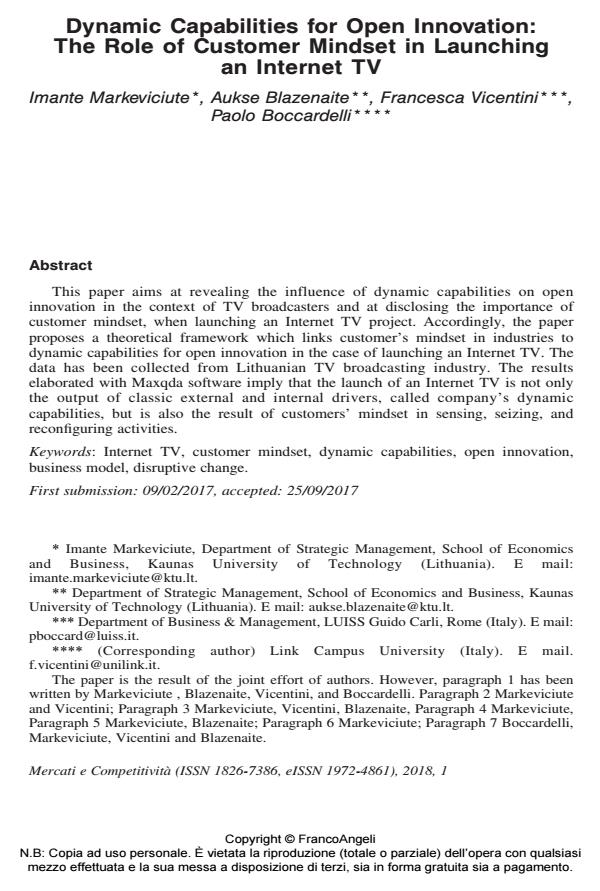Dynamic Capabilities for Open Innovation: The Role of Customer Mindset in Launching an Internet TV
Journal title MERCATI & COMPETITIVITÀ
Author/s Imante Markeviciute, Aukse Blazenaite, Francesca Vicentini, Paolo Boccardelli
Publishing Year 2018 Issue 2018/1
Language English Pages 21 P. 93-113 File size 1512 KB
DOI 10.3280/MC2018-001006
DOI is like a bar code for intellectual property: to have more infomation
click here
Below, you can see the article first page
If you want to buy this article in PDF format, you can do it, following the instructions to buy download credits

FrancoAngeli is member of Publishers International Linking Association, Inc (PILA), a not-for-profit association which run the CrossRef service enabling links to and from online scholarly content.
This paper aims at revealing the influence of dynamic capabilities on open innovation in the context of TV broadcasters and at disclosing the importance of customer mindset, when launching an Internet TV project. Accordingly, the paper proposes a theoretical framework which links customer’s mindset in industries to dynamic capabilities for open innovation in the case of launching an Internet TV. The data has been collected from Lithuanian TV broadcasting industry. The results elaborated with Maxqda software imply that the launch of an Internet TV is not only the output of classic external and internal drivers, called company’s dynamic capabilities, but is also the result of customers’ mindset in sensing, seizing, and reconfiguring activities.
Keywords: Internet TV, customer mindset, dynamic capabilities, open innovation, business model, disruptive change.
Imante Markeviciute, Aukse Blazenaite, Francesca Vicentini, Paolo Boccardelli, Dynamic Capabilities for Open Innovation: The Role of Customer Mindset in Launching an Internet TV in "MERCATI & COMPETITIVITÀ" 1/2018, pp 93-113, DOI: 10.3280/MC2018-001006